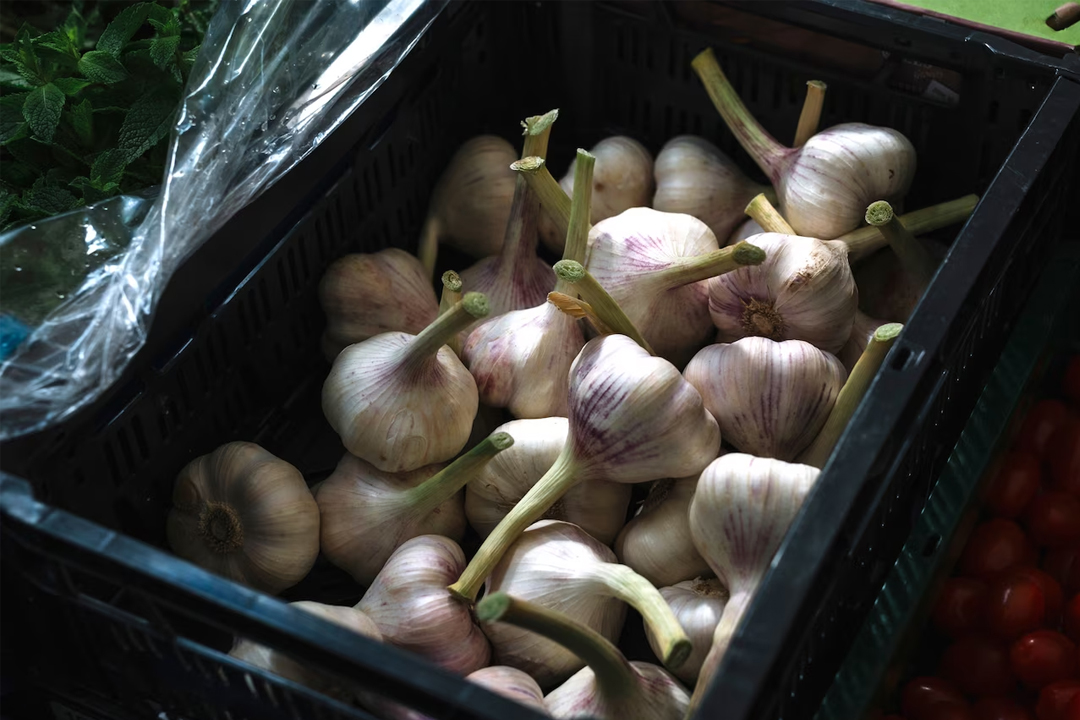
Garlic farming is a lucrative agricultural business that can be practiced in Africa. Garlic is a member of the onion family and is known for its pungent flavor and aroma. It is used in cooking and also has medicinal properties. Garlic can be grown in a wide range of soils and climatic conditions, making it an ideal crop for African farmers.
Here is a step-by-step guide on garlic farming in Africa:
- Site selection: Garlic can be grown in a wide range of soils, but it thrives in well-drained loamy soils. The site should also have access to sunlight and be protected from strong winds. Garlic should not be planted in areas where onions have been grown in the previous season as this can lead to disease buildup.
- Seed selection: Quality garlic seeds are important for a successful crop. The seed should be healthy, disease-free, and of a good size. Farmers can obtain garlic seeds from reputable seed suppliers or from their own stock. Garlic cloves should be separated from the bulb just before planting to prevent drying out.
- Land preparation: The land should be plowed and harrowed to prepare it for planting. The soil should be worked to a depth of at least 15 cm to create a fine seedbed. Any weeds, rocks, or debris should be removed from the soil before planting.
- Planting: Garlic can be planted either in rows or in beds. Cloves should be planted at a depth of 2-3 cm and 10-15 cm apart. Planting should be done in the rainy season to ensure that the crop has enough moisture to grow.
- Irrigation: Garlic requires regular watering, especially during the dry season. Irrigation can be done using drip or overhead irrigation systems. Farmers should avoid overwatering the crop as this can lead to diseases such as rot.
- Fertilization: Garlic requires regular fertilization to ensure good growth and high yields. The crop can be fertilized using organic manure or chemical fertilizers. Farmers should apply fertilizer based on soil test results and the crop’s growth stage.
- Pest and disease control: Garlic is susceptible to pests and diseases such as thrips, nematodes, and white rot. Farmers can control these pests and diseases by using pesticides and fungicides. Farmers should follow the recommended pesticide application rates and intervals to avoid pesticide residues in the garlic.
- Harvesting: Garlic is ready for harvest when the leaves turn yellow and dry. Farmers should avoid harvesting the crop when the soil is wet as this can lead to rot. The garlic bulbs should be carefully dug out of the soil using a fork or shovel. The bulbs should be dried in a well-ventilated area before storage.
Some examples of successful garlic farming in Africa are:
- Kenya: Garlic farming is gaining popularity in Kenya due to its high demand in the local and export markets. Farmers in Kenya are using improved seed varieties and modern farming techniques to increase yields and profitability.
- Egypt: Garlic is one of the major crops grown in Egypt. The country is the largest garlic producer in Africa and the third-largest in the world. Egyptian farmers use irrigation and fertilization to ensure high yields of quality garlic.
- Nigeria: Garlic farming is a profitable business in Nigeria, especially in the northern regions. Nigerian farmers are using improved seed varieties and irrigation to increase yields and export to neighboring countries.
In conclusion, garlic farming is a viable agricultural business in Africa. Farmers can follow the above guide to ensure high yields and profitability.


















